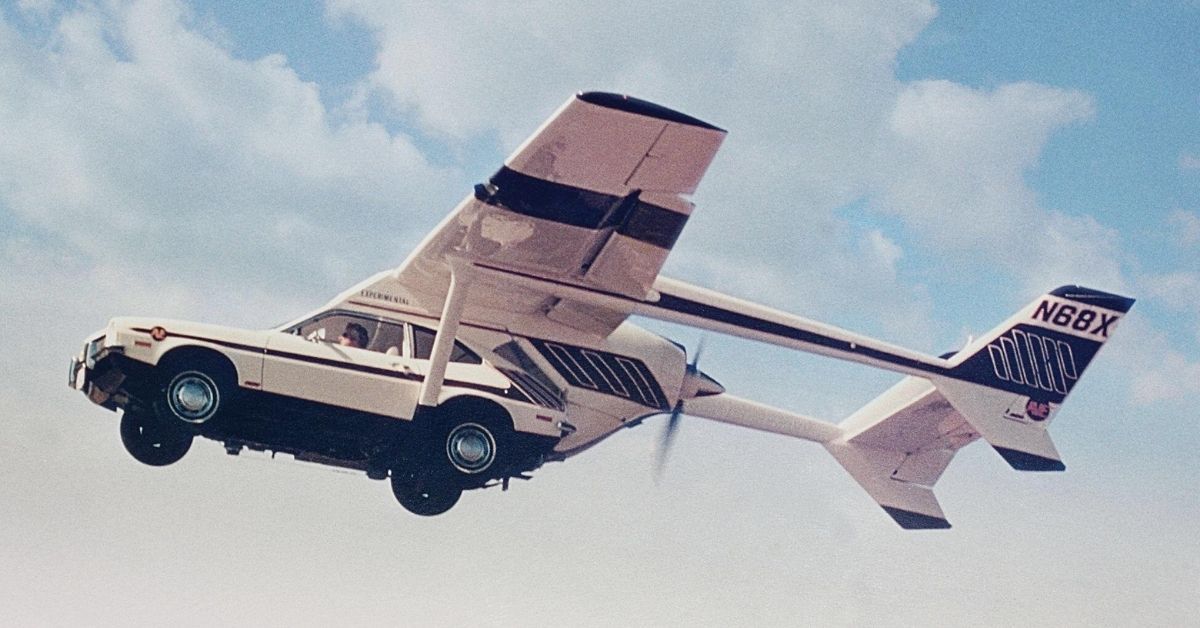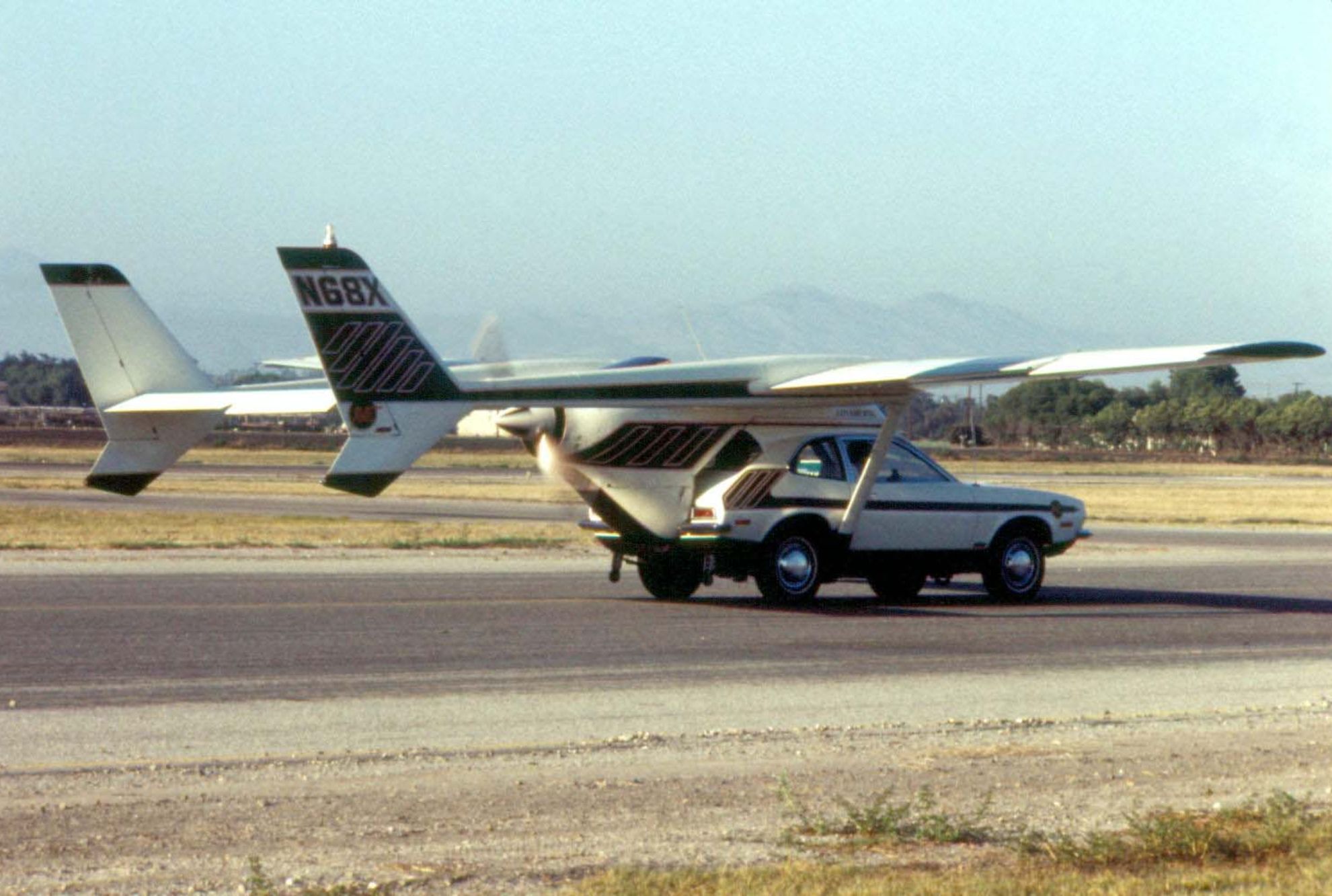Ever since humans looked up to the skies and saw the birds soaring, we have wanted to join them. Where the plane has been a rip-roaring success, the flying car has, largely, been a failure.
No matter how hard we try, it seems we're just not destined to take our beloved four-wheeled rides high above. Whether looking ridiculous or just being a straight-up disaster, flying cars have always been trouble, and perhaps the AVE Mizar is the most deadly example.
Henry Smolinski was the creator of the AVE Mizar. The inventor had a dream to take a Ford Pinto, combine it with a small aircraft, and glide among the clouds. The Pinto is known for its combustible issues, but it also proved lethal for the man who took it to the sky. That dream would soon become a nightmare as the infamously dangerous Pinto took a nosedive during a test flight.
Let's check out the AVE Mizar and why it proved so fatal for its creator.
From Fantasy To Reality
Henry Smolinski didn't just wake up one day wanting to fuse two different machines together. He attended the aeronautical engineering school at the Northrop Institute of Technology.
Smolinski took the skills he learned at college and began a career as a structural engineer with North American Aviation. He then spent a decade learning more about aeronautics with Rocketdyne, where he worked on missile and aerospace programs throughout the 1960s.
After years of working for somebody else, Smolinski wanted to start his own company, and together with his friend, Hal Blake, they formed Advanced Vehicle Engineers (AVE). The company was founded in 1971 with the sole aim of inventing the flying car. That car was to be the infamous Mizar, but it wasn't supposed to end in disaster.
Smolinski and Blake had a simple idea, but they thought it would change how we travel forever. They planned to combine a regular car and a small airplane to become the ultimate two-way vehicle.
Owners of the Mizar would drive to an airstrip on four wheels, attach the airframe and take to the sky. They would then touch down at another airstrip, detach the flying equipment and drive away in a new town.
Making Progress With The Mizar
After coming up with the idea, it was all about making a prototype and getting in the air. AVE took a Ford Pinto and a Cessna Skymaster for their first build. They gutted the Skymaster small aircraft by removing its cabin and front engine. The rest of that aircraft was then carefully mounted onto a Pinto, including the pusher engine, which sat snugly at the back.
Thanks to their engineering brilliance, Smolinski and Blake converted the Pinto's steering system so they could also use it to fly the aircraft. Steering left, or right controlled the direction while pushing in or pulling out on the wheel controlled elevation.
The engineering team also converted the dash of the Pinto to include flight instruments like the fuel pressure gauge, altimeter, and radio equipment. The pilot could control the aircraft's rudder using additional pedals installed at their feet.
Ingeniously, the Mizar used both Skymaster and Pinto engines during take-off. This boosted its speed and allowed for a much faster escape from land. What goes up must come down, and the Mizar relied on the Pinto's brakes to stop it in its tracks.
Where It All Went Wrong
Optimism was high at AVE, but the warning signs were there from the beginning. During a test flight in 1973, one of the Mizar's wing strut attachments failed shortly after the aircraft took to the air. The pilot, Charles Janisse, knew if he turned the aircraft, his wing would have ripped right off, so he landed the Mizar immediately.
Despite the 'failure,' there was a lot of press attention on Smolinski's flying car. The engineer pitched it at just $15,000, claiming that just about anyone could afford to fly this cheap transformed American car. Smolinski's confidence in his invention never seemed to waver, but all of that optimism came crashing down in 1973.
The Mizar was due for another test flight, but it was missing a pilot. However, Smolinski was so confident that his Pinto-with-wings was safe he jumped into the hot seat alongside his business partner Blake.
The pair took off in their makeshift aircraft, but within moments, air traffic controller, Danny Edwards, had sounded the alarm. He spotted the Mizar heading down after its right-wing folded in. Unfortunately, Smolinski didn't have the piloting experience of Janisse and didn't retreat safely to the ground.
As the Mizar made its fatal descent, witnesses spotted pieces flying off and the aircraft twisting through the air. The Mizar burst into flames on touchdown, with both Smolinski and Blake passing away instantly, according to the coroner.
The National Transportation Safety Board assessed the wreckage and noted multiple problems. The chief issue being too heavy, even though it was essentially a little Pinto with wings. Some bad welding was also discovered, which was the reason for the right wing's failure in the sky.
Some Tech Specs
Although it was short-lived, the AVE Mizar did appear to have potential. This aircraft required just one pilot and could seat three passengers. Its wingspan measured 38 ft, and it had a service ceiling of 12,000 ft. Once it was in the air, the Mizar had a cruising speed of 130 mph, and it was estimated to have a range of over 1,000 miles. And, of course, it had the mighty power of a Pinto underneath all of that.
The Pinto's History Of Disaster
In hindsight, strapping a highly combustible car to wings wasn't the best idea. The Pinto threatened to ruin Ford's reputation when the automotive giant introduced it in the 1970s. Pintos were infamous for bursting into flames should the gas tank be damaged in a collision.
Following several people passing away in horrific Pinto explosions and dozens of lawsuits, Ford's reputation was severely damaged. Ford recalled the Pinto to carry out the necessary repairs, but it's little surprise the compact car was discontinued in 1980.



